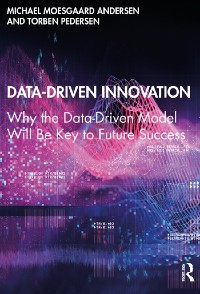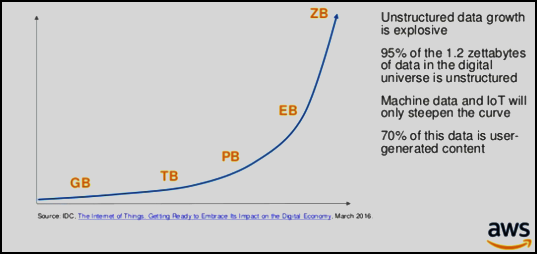
Speed and Effectiveness: When Innovation Is Driven by Data
 Today, innovation does not just occur in large and incumbent R&D organizations. Instead, it often emerges from the start-up community. In the new innovation economy, the key is to quickly find pieces of innovation, some of which may already be developed. Therefore, there is the need for more advanced means of searching and identifying innovation wherever it may occur. At the same time, there is a fast-growing capacity to collect, store and analyze massive amounts of data, far more than individual mind could process on its own. This enormous amount of information denoted Big Data, together with artificial intelligence (AI) and machine learning, are creating brand new opportunities. It is the bedrock of informed decision-making and the key to unlocking new businesses and business that is more efficient. In their new book (Data-Driven Innovation. Why the data-Driven Model Will Be Key to Future Success, Routledge, 2021), Torben Pedersen, Professor of International Business at Bocconi, and Michael Moesgaard Andersen (Copenhagen Business School) point to the importance of data-driven innovation based on digital platforms, as their footprints are growing rapidly and in sync with the shift from analogue to digital innovation workflows. Courtesy of the authors, Bocconi Knowledge publishes an excerpt from the book.
Today, innovation does not just occur in large and incumbent R&D organizations. Instead, it often emerges from the start-up community. In the new innovation economy, the key is to quickly find pieces of innovation, some of which may already be developed. Therefore, there is the need for more advanced means of searching and identifying innovation wherever it may occur. At the same time, there is a fast-growing capacity to collect, store and analyze massive amounts of data, far more than individual mind could process on its own. This enormous amount of information denoted Big Data, together with artificial intelligence (AI) and machine learning, are creating brand new opportunities. It is the bedrock of informed decision-making and the key to unlocking new businesses and business that is more efficient. In their new book (Data-Driven Innovation. Why the data-Driven Model Will Be Key to Future Success, Routledge, 2021), Torben Pedersen, Professor of International Business at Bocconi, and Michael Moesgaard Andersen (Copenhagen Business School) point to the importance of data-driven innovation based on digital platforms, as their footprints are growing rapidly and in sync with the shift from analogue to digital innovation workflows. Courtesy of the authors, Bocconi Knowledge publishes an excerpt from the book.
We do not suggest that all innovation can easily be purchased externally-that would essentially be the same as pleading for complete outsourcing of corporations' innovation and R&D. Rather, our aim is to point to the need for a new balance between build and buy, as the buy option is often either overlooked or under prioritized.
Many possibilities exist with regard to the buy option. There are already a considerable number of platform vendors through which corporations can gain access to start-ups and, thereby, innovation.
The Big Data explosion 
Within the big data space, patterns can be detected in the data. For example, Google was better at predicting the spread of the SARS virus than the World Health Organization, which was supposed to be the expert. Google simply assumed that the origination of searches from a geographical perspective was identical to the actual spread of SARS. The correlation was high, although one could question whether there was causality.
A completely different situation is evident with regard to innovation, where there is no easy method of measuring it, such as Google searches, IBM's Watson database, or other databases. In fact, for many years, there was no database on innovation.
Today, one can search the internet for "innovation." However, what comes out of such a search is less than adequate. Whether you use search engines or AI, the result is highly dependent on the quality of the data. If you, for instance, google "innovation," you will receive no less than 2,150 million hits. You can reduce this by a factor of 31 if you search for "innovation water pumps," which results in only 68.5 million hits. The number can be further dramatically by searching for start-ups within this field, recognizing that much modern innovation comes from start-ups.
Interestingly, a number of platforms have recently emerged that offer access to innovations developed by start-ups. As significant amounts of data are collected on these platforms, we see a new industry developing that revolves around digital platforms for data-driven innovation. One of the major advantages of digital platforms is that they extend the search for start-ups and innovation beyond firms' own collaborators. While open innovation is typically conducted in collaboration with close counterparts like suppliers and customers, data-driven innovation platforms search for innovative start-ups all over the world. As such, they move open innovation to a new level, where the search for innovation becomes global.
Therefore, we need to take a closer look at this type of platform. One underlying rationale for building these platforms lies in the obvious advantages of collaboration between corporations and start-ups, which are captured in the table below.
Complementarity between start-ups and corporations 
As illustrated in the table, complementarity exists between innovation, resources, customers, and scale. Corporations have what start-ups lack and start-ups have what corporations need. How should this general match be supported?
The answer to this question was blowing in the wind for several years during which experiments were launched with a number of modalities, such as start-up events, incubator and accelerator programs, direct investments, partial investments, and M&A activities. Most of these initiatives were introduced by corporations. However, none of them were data driven.
Finding the "right" piece of innovation is sometimes like finding a needle in a haystack. Such exercises are not easy and they are often more emotional than rational, especially when the traditional modalities are utilized. Therefore, it is only natural that a number of digital platforms have emerged in order to untie the Gordian knot of matching the different qualifications of corporations and start-ups.
One of many advantages of relying on digital platforms is speed. While some traditional methods may be cumbersome and time consuming, it is easier and faster to undertake searches using qualified databases. Speed here goes hand in hand with effectiveness. Instead of contacting a limited and serendipitously selected number of start-ups located nearby, corporations can search among millions of starts-ups globally and in real time.